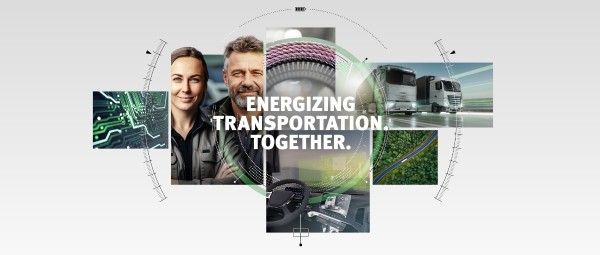Schaeffler at IAA TRANSPORTATION 2024
After a successful premiere in Hanover two years ago, Schaeffler was once again showcasing its role as a key partner for a successful transformation. In light of ambitious emission reduction targets, Schaeffler was presenting innovative technology solutions for a more sustainable transportation sector.
How we contribute to a sustainable transport sector
In their video messages, Matthias Zink, CEO Automotive Technologies, Wendelin Backes, Head of Global Key Account Management and Leif Rein-hold, Head of Business Unit Sensorics & Controls at Vitesco, provide insights into our trade fair appearance.
Challenges for the transportation sector
Ambitious targets for emission reduction
Heavy commercial vehicles and buses currently make up just four percent of the global vehicle fleet. However, they cause around 40 percent of global CO2 emissions in the transportation sector, primarily due to the enormous volumes of goods they transport. At the same time, the transport industry is facing ambitious emission reduction targets. In Europe, commercial vehicles must reduce CO2 emissions by 45 percent by 2030 compared to 2019. To achieve this target, the European Automobile Manufacturers' Association (ACEA) states that the proportion of emission-free vehicles in the fleet must increase significantly - to 400,000 vehicles by 2030. This is a major challenge considering the insufficient charging and refueling infrastructure, the lack of renewable energy sources and the limited range of the vehicles.
Schaeffler stands by its customers as a key partner for a successful transformation. Electrified powertrains have been part of Schaeffler's core business for years. With the merger with Vitesco Technologies, we are further expanding our electronics and software expertise in the powertrain.
Need for energy-efficient and resource-saving powertrain solutions
Successful decarbonization, however, requires an increase in the efficiency of all powertrain technologies. From diesel and hydrogen combustion engines to battery electric drives and fuel cells. Schaeffler develops and manufactures a mix of different energy-efficient and resource-saving powertrain solutions for a wide range of applications. Our technology-open strategy is based on our "Vision Powertrain", which states that electric commercial vehicles will account for 20 percent of all new registrations worldwide in 2030. Almost three-quarters of all vehicles will continue to be equipped with combustion engine technology. These combustion engines will have to contribute to lower emissions, too. Because: Every milligram less emissions counts in achieving the global climate targets!
Schaeffler’s focus topics at IAA TRANSPORTATION
Powertrain BEV & FCEV
In 2030, electric powertrains for BEV and FCEV will account for 20 percent of global heavy duty vehicle production. Schaeffler is well positioned in the field of electrified powertrains from e-motors and fuel cell systems to power electronics.


Powertrain ICE
Every gram of CO2 saved by our technology counts. This is why Schaeffler develops technologically leading components and systems to improve combustion efficiency in H2, Diesel and NG-Engines. For example, with variable valvetrain solutions and sensors.
Systems know-how
Electrified powertrains have been part of Schaeffler’s core business since 2018. Thanks to our systems know-how, we ensure optimum interaction between subsystems and components. For example, between the electric motor, power electronics, wheel bearing, transmission, and actuators in complex systems such as the HD E-axle.


Chassis
With innovative chassis technologies that enable highly automated driving, Schaeffler is shaping the future of transportation as driver shortage becomes an increasingly challenging issue. These products include the electro-hydraulic steering system and the advanced sensor cleaning system.
Press & Downloads

Media contact and press material
For media inquiries about attending the IAA Transportation, please contact:
steffen.nielaender@schaeffler.com

